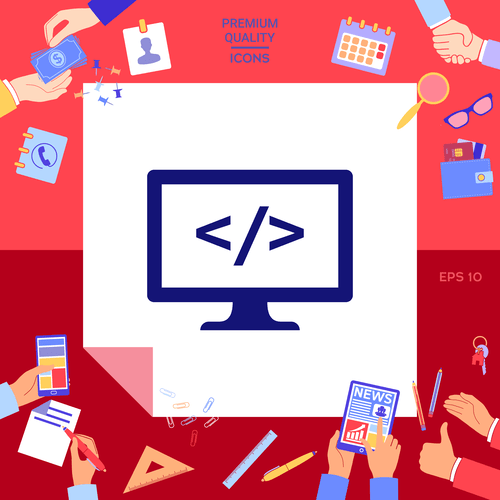If it fails, halt further tests and ask for a new build with the required fixes. If an application is badly broken, detailed testing might be a waste of time and effort. Automation tools are readily available, and multiple tool suppliers make various product promises. Most well-known technologies concentrate on browser-based automation, with Selenium currently holding the top spot for browser automation frameworks. Checking these operations for bugs identifies any issues with the program. The command lines that download the necessary files to the local drive for smoke testing vary depending on the software.
The majority of problems are discovered during the early phases of software development with the aid of smoke testing. Our free-forever Startup plan gives you five hours of free testing every month. That’s enough time for most testing teams to run a small set of smoke tests a few times every day. Plus, you won’t be charged for the time spent writing, editing, or managing your testing suite. This means you can create several tests and run them a few times to get a feel for the tool—all without paying a cent.
Hybrid tests
GitHub Actions tab in repositoryYou will see that your tests are running. This is because our workflow file told GitHub to run our tests whenever anyone pushed to any branch. Note that the name will vary depending on your commit message.

Still, they have to ensure the software is flawless and ensure it's ready to proceed to the next phase of rigorous testing. Smoke Testing does not cover all the functionality in the application. This case could perhaps be a smoke test or regression test, but could also be an edge case found in a larger set of functional tests.
Rate this article
So, an initial build is subjected to smoke testing before its sent to other levels of testing. The process of smoke testing targets all key what is smoke test functionalities. If key features aren’t working, or major bugs haven’t yet been fixed, there’s no reason to waste time on further testing.
- They are used to test new builds and ensure that the core or critical functions of the written program are working properly.
- Its features are very similar to smoke testing, with one key difference.
- It is always a risk that the build does not work properly on the environment.
- That's because smoke tests help you catch bugs before your QA teams find them.
- Smoke testing tools make the testing process more efficient by automatically providing relevant tests.
These are just some of the testing types our QA engineers excel in. Having one outside team deal with every aspect of quality assurance on your software project saves you time and money on creating an in-house QA department. We have dedicated testing engineers with years of experience, and here is what they can help you with. The actual term “smoke testing” was coined by engineers performing electronic hardware testing. QA team will proceed to test the major functionality of the application to find any significant issues in the system or not. A sanity test is done on an existing build that had new features added or functionalities that were corrected.
When is the smoke testing process recommended?
Immediately redeploy the build after making necessary corrections if the test is unsuccessful. Often, smoke testing is known as build verification or confidence testing. It refers to a similarly fundamental form of testing where a build passes the test if it doesn’t “catch fire” on the first turn-on — hence the term smoke. Another theory states that the term https://www.globalcloudteam.com/ ‘smoke testing’ originated from the hardware testing, where a device when first switched on is tested for the smoke from its components. Maintain quality — Going over functions tested in previous phases helps ensure an application’s overall quality and stability. One of the biggest differences between smoke and regression testing is the depth of testing.
Before performing smoke testing, QA should ensure that each build has been built with the correct version. Smoke testing catches bugs first, and your API testers won't have to waste time looking for things that aren't there. That's how smoke testing helps you ensure your API testing is effective. API testing ensures that an application programming interface can perform its expected functionalities.
What is Smoke Testing
Regardless of its origin, however, smoke testing is a crucial component of your building process. Uncovering obvious errors immediately saves time and effort for your QA team. Additionally, it can promote confidence and job satisfaction among the QA teams. Regardless of what type of smoke test you choose to conduct, the planning stage remains largely the same. After all, if there is an error with the critical areas of the build, then it would be a waste of time to check its other, less important functions.

At the same time, people should refrain from using less significant testing features. The more tests conducted, the more reliable and practical the outcomes become. This actually answers the second question as well, “Who performs Smoke Testing?
Review workflow file
If the test fails, they may instantly fix the build and redeploy it. This allows us to save time while also ensuring a high-quality build for the QA environment. Smoke testing is performed to check that key path travel is as intended and does not interfere with functioning. Once the build has been delivered to QA, prioritized functionality test cases must be selected and examined in order to identify major flaws in the system. Smoke testing is crucial in software development since it verifies the system's accuracy in the early phases. As a consequence, smoke tests restore the system to its original condition.

The first step in a scenario-focused approach is to define the most critical tasks performed in a system or application. This cycle helps identify basic and critical issues in an application before the team working on it performs more in-depth testing. This is why smoke testing is performed at the initial phase of the testing lifecycle. The term smoke testing originates from a basic type of hardware testing in which a device passes the test if it doesn't catch fire the first time it turns on. In Software Engineering, Smoke testing should be performed on each and every build without fail as it helps to find defects in early stages. Smoke test activity is the final step before the software build enters the system stage.
Smoke Testing 101 for Software Applications
Also, smoke tests are most efficiently and sustainably performed as automated tests, but can be performed manually. We can see immediately in both of these definitions that smoke testing is typically not achieved in a single test case, but rather in a collection of tests. This collection of tests may vary in number, depending on the item being tested, but the goal remains the same – to find basic defects early before other work occurs on the item.